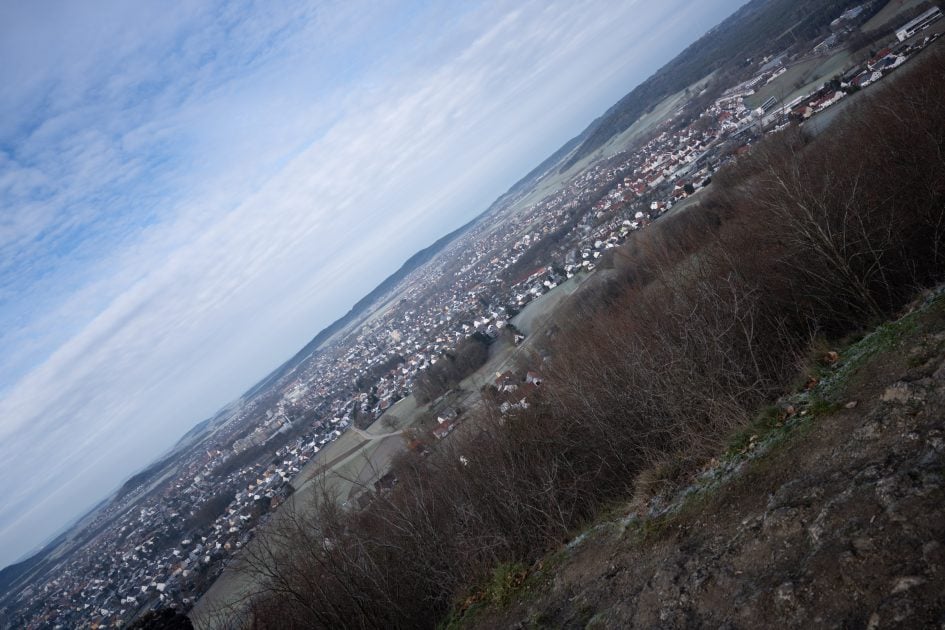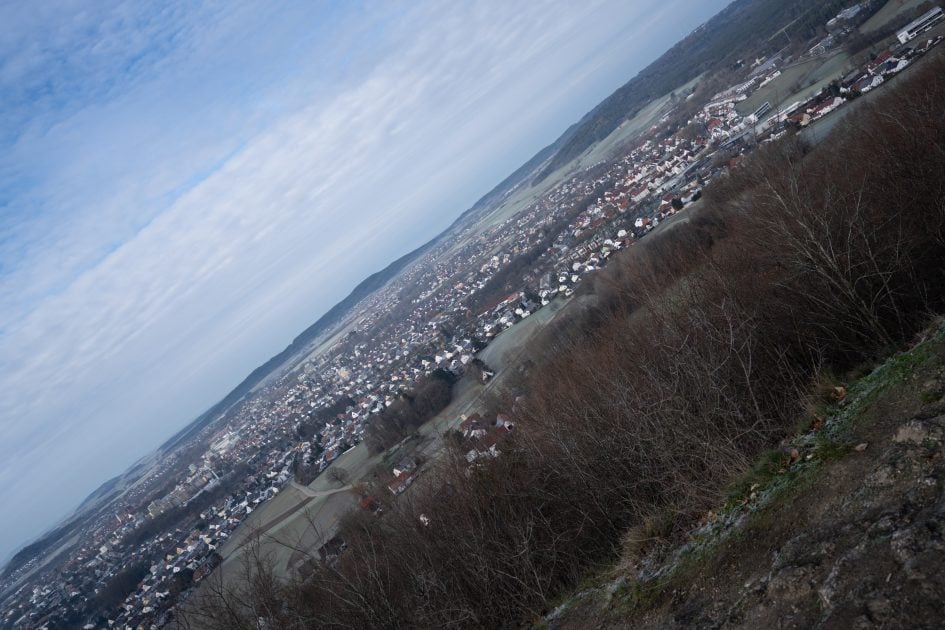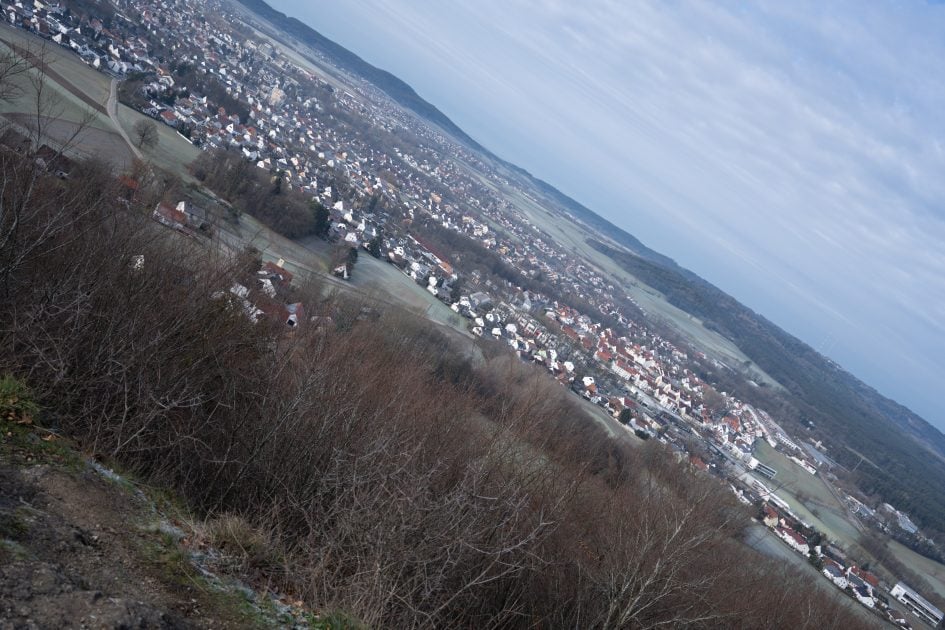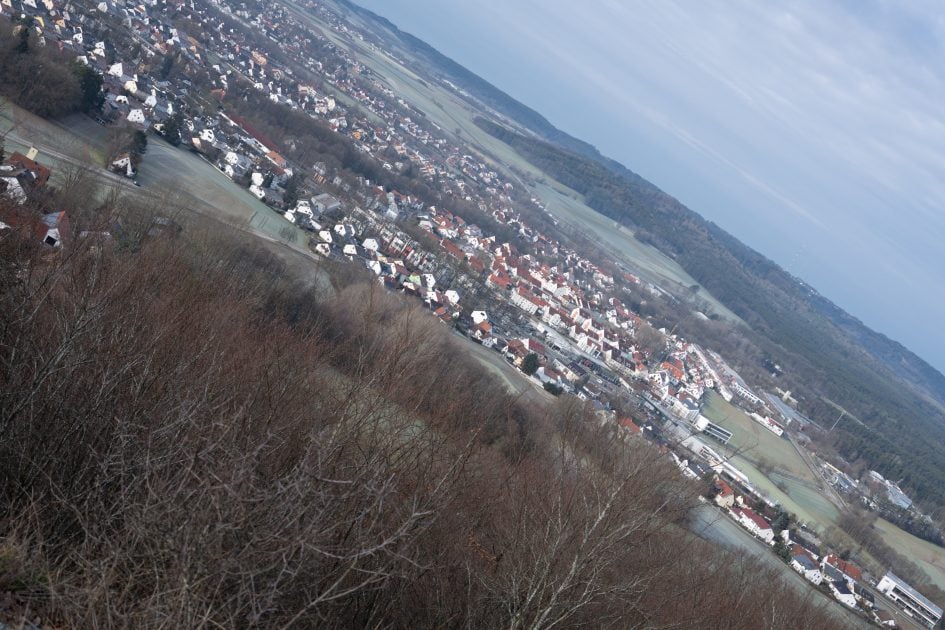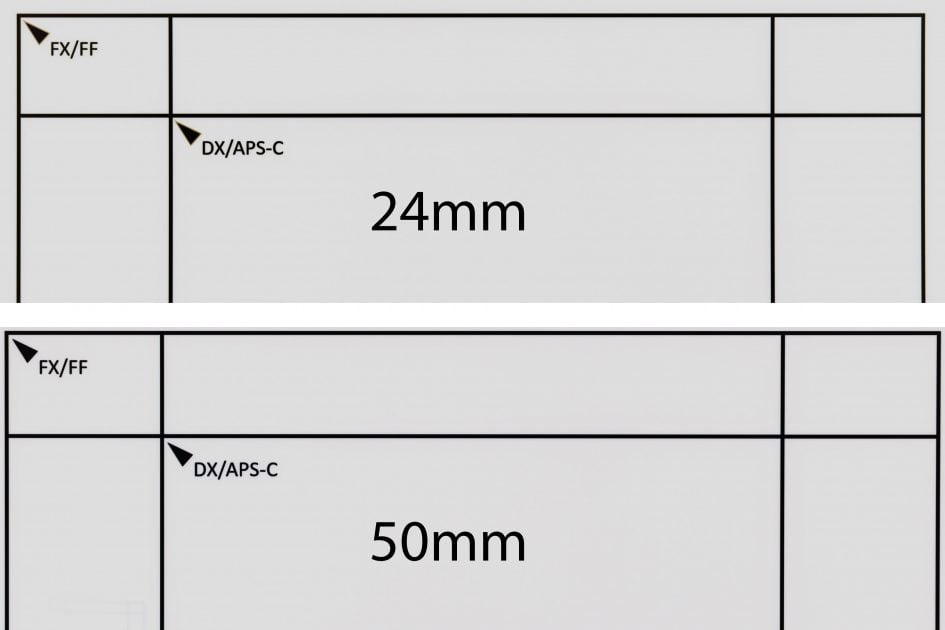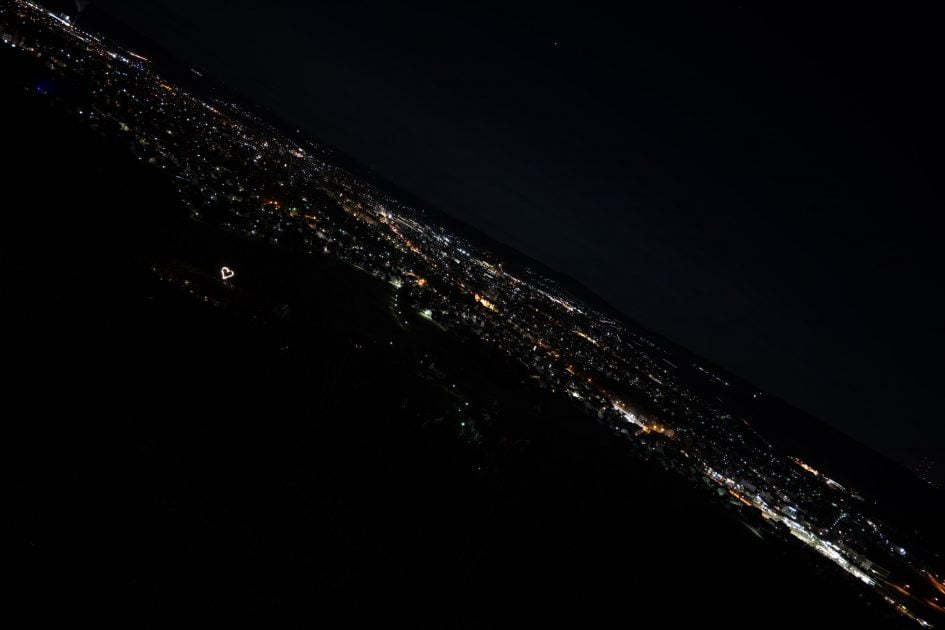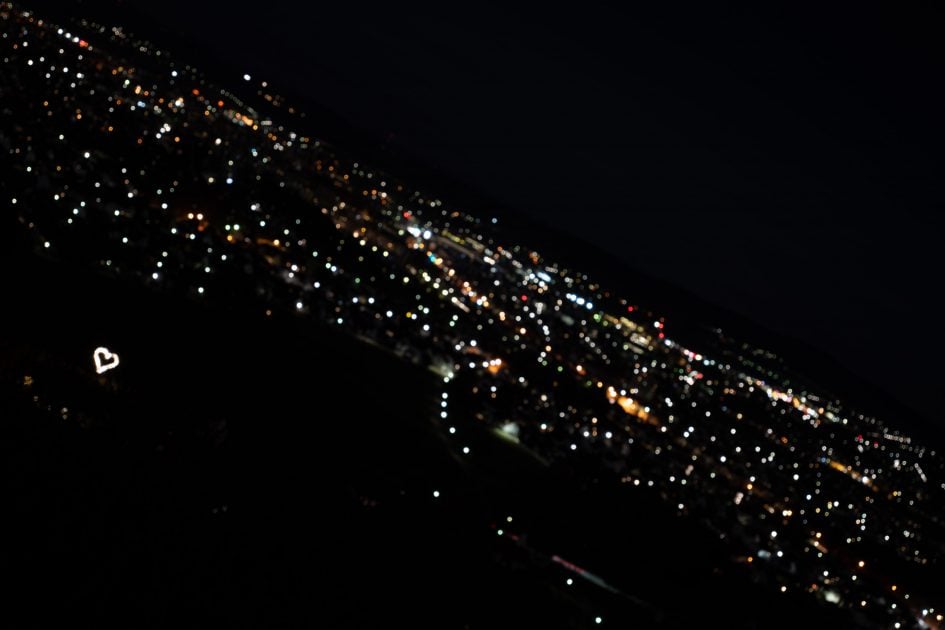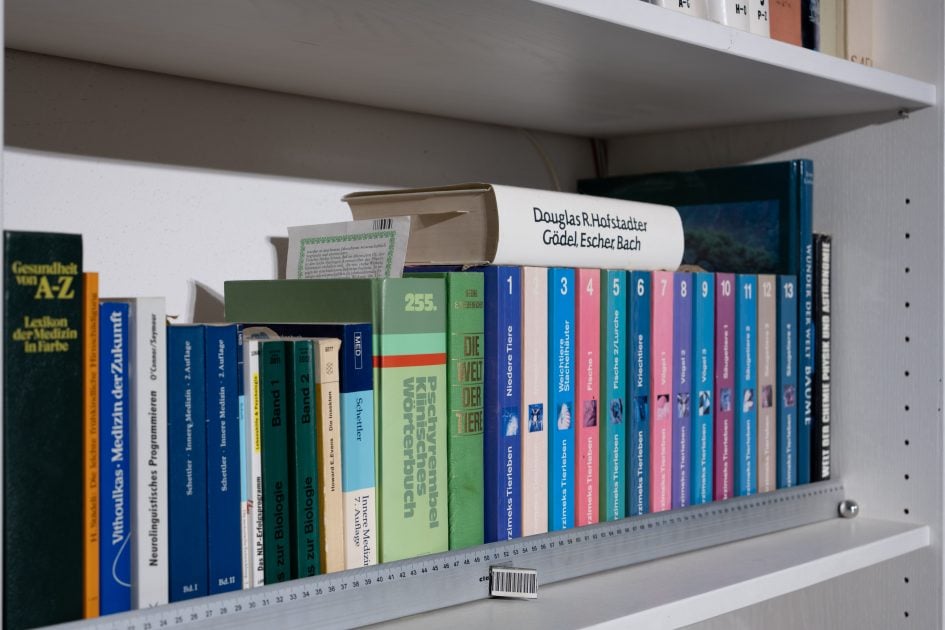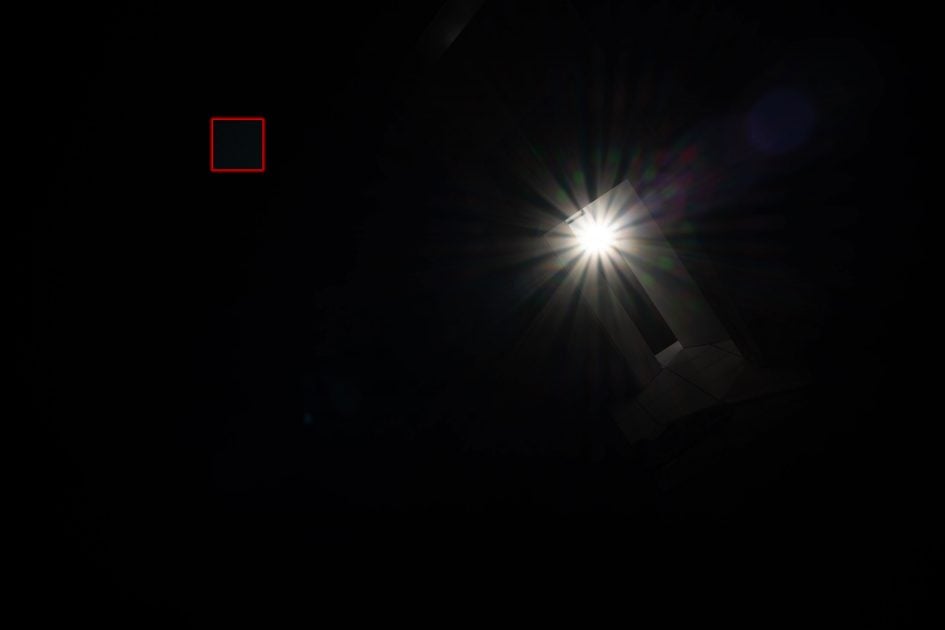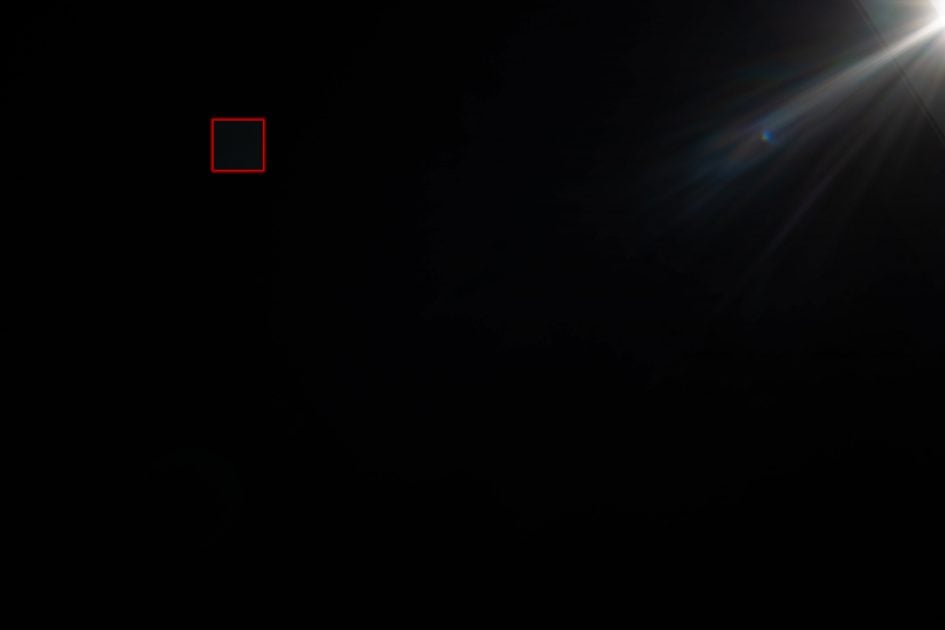Nikon Z 24-50mm f4-6.3 review
-
-
Written by Thomas
Quality
Longitudinal Chromatic Aberration and focus shift
I tested the Nikon Z 24-50mm f4-6.3 at both the long and the short end for longitudinal color aberrations (loCA, a.k.a. “axial color” or “bokeh CA”) and focus shift. The former can show up as magenta coloration in the foreground and greenish hues in the background and are not easily corrected in post-processing. The lens shows practically no loCA or focus shift at the long end but a tiny bit of focus shift away from the camera at 24mm focal length:
Nikon Z 24-50mm f4-6.3 longitudinal Chromatic Aberration (loCA)
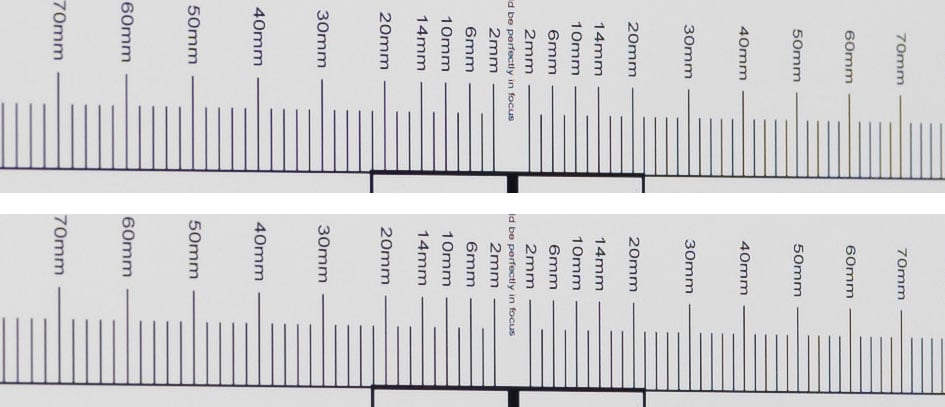
100% crops at 24mm f4.0 (top), f5.6 (bottom); 100% crops, left = foreground, right = background
And even against strong contra light the Nikon Z 24-50mm f4-6.3 shows practically no purple fringing around high-contrast edges in the focus plane or green outlining around background subjects:
Above: Nikon Z 24-50mm f4-6.3 at 50mm f6.3; 100% crop, click image for 4k version, here for large original
Sharpness and contrast
Let’s have a look at the theoretical performance of the new Nikon Z 24-50mm f4-6.3 and compare it to the Sigma 24-70mm f5-6.3 DG DN OS, Sony FE 24-70mm f4.5-5.6 GM OSS:
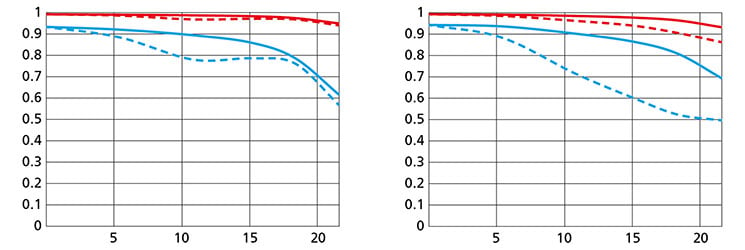
Above: Nikon Z 24-50mm f4-6.3, 24mm f4.0 (left), 50mm f6.3 (right)
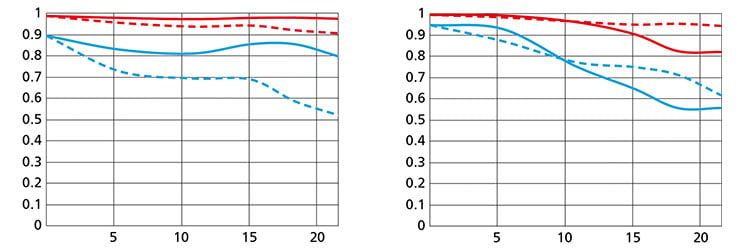
Above: Nikon Z 24-70mm f4 S, 24mm f4.0 (left), 70mm f4.0 (right)
These MTF charts show the computed lens-performance of lenses wide open without influence of diffraction at 10 line-pairs/mm (red) and 30 lp/mm (blue). Higher values are better (more contrast) and the closer the dotted and solid lines are together the less contrast dependents on the orientation of the test-pattern (less astigmatism). The x-axis displays the distance from the optical axis (=center of the sensor) in mm.
From the charts the Nikon Z 24-50mm f4-6.3 should be pretty contrasty and sharp at the short end while the long end suffers a bit from astigmatism once you look towards the DX-corner or beyond.
Let’s see how this theoretical performance translates into real life results in the sharpness test based on Siemens-stars shot on a 45MP Nikon Z7. Processing was done in Lightroom 12.1/CRAW 15.1 from RAW to Adobe Color profile with the built-in lens profile applied. Noise-reduction is set to 0, sharpening to 50/0.5/36/10, with no extra tone, color, or saturation adjustment. White-balance was adjusted to a neutral white and I did some exposure compensation to make the brightness of all crops match. So you will not see light fall-off in the corners.
The following are all 100% crops!
First up is an overview of the wide-open performance at different focal lengths. You can jump to the detailed results at different apertures and comparisons with the Nikon Z 24-70mm f4 S by clicking on the crops of the respective focal length.
Nikon Z 24-50mm f4-6.3; 100% crop from center, APS-C/DX-corner, FF/FX-corner
Above: 24mm, f4.0
Above: 28mm, f4.5
Above: 35mm, f5.0
Above: 50mm, f6.3
Nikon’s Z 24-50mm looks very sharp in the center with a slight softening towards the long end. The DX-corner also looks pretty good at 24mm and 50mm but a bit softer in-between. The FX-corner is softer again as the DX-corner but still very usable at all focal lengths. Field curvature is not detectable at any focal length: all crops in the rows above were taken from the same shot.
The following 100% crops for each focal length show the Nikon Z 24-50mm f4-6.3 from wide open down to f11 compared to the Nikon Z 24-70mm f4 S.
If you want to see all the details and comparisons read on. Or you can fast-forward to the performance at long distances.
Performance at 24mm:
Nikon Z 24-50mm f4-6.3 at 24mm compared; 100% crop from center, APS-C/DX-corner, FF/FX-corner

Above: Nikon Z 24-50mm f4-6.3 at 24mm, f4.0

Above: Nikon Z 24-70mm f4 S at 24mm, f4.0; also available at f5.6, f8.0, f11

Above: Nikon Z 24-50mm f4-6.3 at 24mm, f5.6

Above: Nikon Z 24-50mm f4-6.3 at 24mm, f8.0; also available at f11
At 24mm the 24-50mm zoom is clearly sharper than the Z 24-70mm f4 S across the sensor.
Performance at 28mm:
Nikon Z 24-50mm f4-6.3 at 28mm compared; 100% crop from center, APS-C/DX-corner, FF/FX-corner

Above: Nikon Z 24-50mm f4-6.3 at 28mm, f4.5

Above: Nikon Z 24-70mm f4 S at 28mm, f4.0; also available at f5.6, f8.0, f11

Above: Nikon Z 24-50mm f4-6.3 at 28mm, f5.6

Above: Nikon Z 24-50mm f4-6.3 at 28mm, f8.0; also available at f11
At 28mm both Z-Nikkors look pretty similar with the 24-50mm still producing the sharper center.
Performance at 35mm:
Nikon Z 24-50mm f4-6.3 at 35mm compared; 100% crop from center, APS-C/DX-corner, FF/FX-corner

Above: Nikon Z 24-50mm f4-6.3 at 35mm, f5.0

Above: Nikon Z 24-70mm f4 S at 35mm, f5.6; also available at f4.0, f8.0, f11

Above: Nikon Z 24-50mm f4-6.3 at 35mm, f5.6

Above: Nikon Z 24-50mm f4-6.3 at 35mm, f8.0; also available at f11
At 35mm the 24-50mm leads in the center and FX-corner while the 24-70mm has a slightly sharper DX-corner.
Performance at 50mm:
Nikon Z 24-50mm f4-6.3 at 50mm compared; 100% crop from center, APS-C/DX-corner, FF/FX-corner

Above: Nikon Z 24-50mm f4-6.3 at 50mm, f6.3

Above: Nikon Z 24-70mm f4 S at 50mm, f5.6; also available at f4.0, f8.0, f11

Above: Nikon Z 24-50mm f4-6.3 at 50mm, f8.0; also available at f11
At the long end both Z-Nikkors are almost indistinguishable.
All-in-all the Nikon Z 24-50mm f4-6.3 zoom lens seems at least as sharp as the Nikon Z 24-70mm f4 S in the overlapping zoom range. The test also shows that the lens gains little from stopping down. So you can confidently use the lens wide open and get a very sharp center with only a slight softening towards the corners.
Performance at long distances
The Siemens-star test-targets are shot at a distance of 45x focal length (i.e. at around 2.3m for 50mm focal length). But performance of lenses also depends on the shooting distance. Therefore, I present another series of images shot on a 45MP Nikon Z 7 of a city around 1 km away. Processing was done in Lightroom 12.2/CRAW 15.2 from RAW to Adobe Color profile with the built-in lens profile applied. Noise-reduction is set to 0, sharpening to 50/0.5/36/10, with no extra tone, color, or saturation adjustment. All shots were made from a heavy tripod with image stabilization switched off at ISO 64. As usual I have selected the diagonal that provided the better corner results although the 24-50 was only slightly decentered.
The following images show the complete scene wide open plus 100% crops from the center, APS-C/DX-corner, and FF/FX-corner. You can access the large originals but please respect our copyright and only use those images for personal use.
Nikon Z 24-50mm f4-6.3 at 24mm
Above: Nikon Z 24-50mm f4-6.3 at 24mm, f4.0; click image for 4k version, here for large original; crops also available at f5.6, f8.0
Nikon Z 24-50mm f4-6.3 at 28mm
Above: Nikon Z 24-50mm f4-6.3 at 28mm, f4.5; click image for 4k version, here for large original; crops also available at f5.6, f8.0
Nikon Z 24-50mm f4-6.3 at 35mm
Above: Nikon Z 24-50mm f4-6.3 at 35mm, f5.0; click image for 4k version, here for large original; crops also available at f5.6, f8.0
Nikon Z 24-50mm f4-6.3 at 50mm
Above: Nikon Z 24-50mm f4-6.3 at 50mm, f6.3; click image for 4k version, here for large original; crops also available at f8.0
In this long-distance test the Nikon Z 24-50mm f4-6.3 performed similar to the preceding test: Very sharp in the center with good DX-corners and very usable FX-corners. Only at 35mm the lens is softer than at other focal lengths and profits from stopping down: f5.6 improves the center and the corners get visibly sharper at f8.0.
Vignetting and distortions
To make it easier to see light fall-off in the corners of a full-frame sensor I’ve arranged a series of three shots each with the Nikon Z 24-50mm f4-6.3 at 70mm and 300mm focal length and different apertures. All images were developed from RAW with Adobe Color profile to the same brightness in the center and are shown with vignette control Off (1st row) or Normal (2nd row):
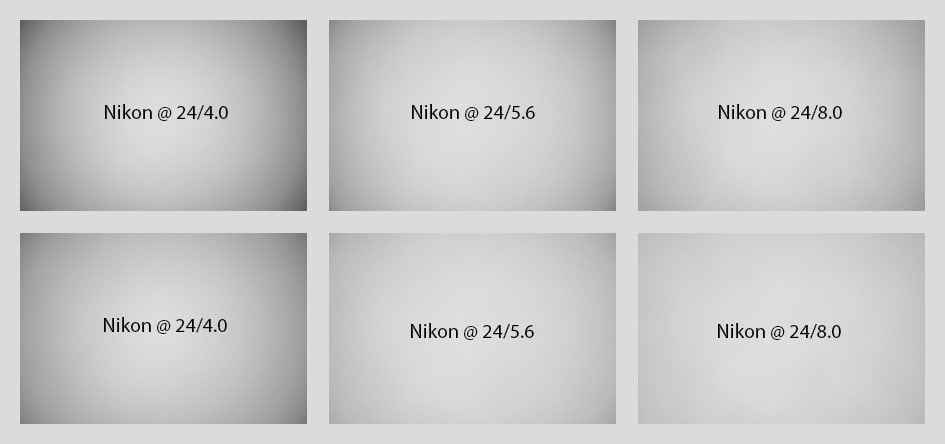
Above: Nikon Z 24-50mm f4-6.3 at 24mm focal length with vignette control Off (top) or Normal (bottom)
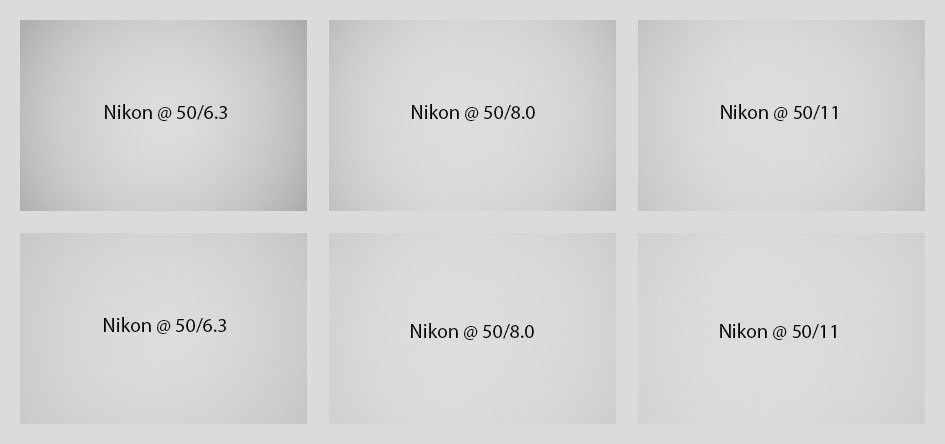
Above: Nikon Z 24-50mm f4-6.3 at 50mm focal length with vignette control Off (top) or Normal (bottom)
At 24mm vignetting is pretty strong at f4.0 and only lifted by about 0.5 EV with vignette control set to Normal. At 50mm focal length light fall-off is not an issue. Adobe’s RAW converter automatically applies vignette control as it was set in camera – but you cannot alter the setting in postprocessing.
Auto distortion control cannot be switched off – neither in camera nor via post-processing in Lightroom, Photoshop, nor NX Studio. The resulting corrected distortions are extremely low at 24mm as well as 50mm focal length. The following composite image shows the upper half of a large screen TV set displaying grid lines for the full frame and cropped frame (shot as RAW and developed in Lightroom 12.2/CRAW 15.2):
Distortions: Nikon Z 24-50mm f4-6.3 at 24mm (top) and 50mm (bottom), auto distortion control On; click image for 4k version
Rendering of point-light sources at night-shots
Night-shots pose a different challenge for lenses as the contrast is even higher than under bright sun and point-light sources can reveal some weaknesses such as coma, haloing and colour-aberrations that do not show up as prominently in other test-shots. The 100% crops below the main image show the effect of coma in the FF-corner of the Nikon Z 24-50mm f4-6.3 at different apertures:
Above: Nikon Z 24-50mm f4-6.3 at 24mm, f4.0; click image for 4k version, here for large original

Above: Nikon Z 24-50mm f4-6.3 at 24mm; 100% crops from the FF-corner at f4.0 (left), f5.6 (middle), f8.0 (right)
The Nikon Z 24-50mm f4-6.3 produces very little coma even wide open. But the test revealed some blue color artifacts around bright streetlights outside the DX image-circle.
Bokeh quality
This test is for the rendering of point-light sources in an out-of-focus background. The circle of confusion that is produced by the test is pretty indicative of Bokeh performance (in the background) and light fall-off. Ideally the out-of-focus image of the point-light is evenly lit and perfectly circular, with no “onion-rings”, and without coloration. Lenses normally produce an effect known as “cat’s eye” the further away from the optical axis the point-light is projected. This is due to optical vignetting in the lens barrel when light enters the lens from an angle.
The crops below the main image are from the center, APS-C/DX-corner, and FF/FX-corner of the 4k version.
Above: Nikon Z 24-50mm f4-6.3 at 50mm, f6.3; click image for 4k version
Above: Nikon Z 24-50mm f4-6.3 at 50mm, f6.3; click image for 100% crop
As you can see the circle of confusion at my normal magnification of around 1:30 (for upper body shots) is extremely small. No wonder with an entrance pupil of only 8mm. For bigger Bokeh balls in the background you need to focus (and get) closer to your subject like in the following shots with a magnification of around 1:10.
Above: Nikon Z 24-50mm f4-6.3 at 50mm, f6.3; click image for 100% crop, here for 4k version of full image
Above: Nikon Z 24-50mm f4-6.3 at 50mm, f8.0; click image for 100% crop
Above: Nikon Z 24-50mm f4-6.3 at 50mm, f11; click image for 100% crop
Compression of the circle towards the corners is relatively moderate wide open. The inside of the Bokeh balls shows a clear ring and there’s also pretty strong outlining – albeit without coloration from loCA.
Let’s see how this analysis of out-of-focus point-light sources translates into Bokeh-performance shooting a bookshelf. Crops are from the foreground, middle-ground, and background resized to make them comparable across all my reviews.
Above: Nikon Z 24-50mm f4-6.3 at 50mm, f6.3; click image for 4k version, here for large original
Above: Nikon Z 24-50mm f4-6.3 at 50mm, f6.3; click image for 4k version, here for large original
Above: Nikon Z 24-70mm f4 S at 70mm, f4.0; click image for 4k version, here for large original
Although the setting (70mm f4.0 vs. 50mm f6.3) favors the Nikon Z 24-70mm f4 S with a much larger entrance pupil the Nikon Z 24-50mm f4-6.3 shows a similar Bokeh even with a softer foreground rendering and less double contours. See also the following crops (now at 100%) from the same images showing the ruler in the transition zone:
Above: Nikon Z 24-50mm f4-6.3 at 50mm, f6.3; click image for 4k version, here for large original
Above: Nikon Z 24-70mm f4 S at 70mm, f4.0; click image for 4k version, here for large original
All-in-all the Nikon Z 24-50mm f4-6.3 produces a relatively nice Bokeh considering its meagre focal ratio. But you need to get close to your subject to get any noteworthy background isolation.
Close-up performance
The Nikon Z 24-50mm f4-6.3 achieves a maximum magnification of 1:4.6 in close-up shooting at 50mm focal length where the area of sharp focus is just 110 x 165mm. The following shots were done at 1:4.9 magnification with crops from 0mm, 14mm, and 20mm off the center of the sensor respectively.
Nikon Z 24-50mm f4-6.3 at 50mm, 1:4.9 magnification; 100% crops

Above: Nikon Z 24-50mm f4-6.3 at 50mm, f6.3

Above: Nikon Z 24-50mm f4-6.3 at 50mm, f11

Above: Nikon Z 24-50mm f4-6.3 at 50mm, f16
The Nikon Z 24-50mm f4-6.3 shows quite some detail in the center even wide open although contrast is reduced from residual spherical aberrations. Stop down to f8 to achieve a clear rendering of the center. But to improve the sharpness in the DX- or FX-corner you need to stop further down to f11 or f16. Btw: Field curvature is not the culprit for the soft corners.
Flare, ghosting, and sunstars
Catching a strong light-source shining directly into the lens is always a risky business: it could produce strange colorful ghost-images or reduce contrast considerably through flare and glare. The appearance of flare and ghosting depends on factors like the aperture and the angle of the light hitting the lens. So to judge the proclivity of Nikon’s Z 24-50mm f4-6.3 for these artifacts I went through a series of well calculated shots at the short end against a strong light source to provoke glare and ghosting. I didn’t use a lens hood as it is not included with the lens. Following are two of the more extreme example results. The little bright square inset in the upper left shows the respective area with an exposure compensation of +3 EV to make it easier to see which levels of black the lens renders at that point:
Above: Glare and ghosting from strong light hitting the Nikon Z 24-50mm f4-6.3 at 24mm, f11; click image for 4k version or here for +3 EV exposure compensation
Above: Glare and ghosting from strong light hitting the Nikon Z 24-50mm f4-6.3 at 47mm, f11; click image for 4k version or here for +3 EV exposure compensation
The Nikon Z 24-50mm f4-6.3 does not show strong ghosting artifacts when the light-source is inside the frame and veiling glare is pretty well controlled. But you may want to avoid a strong light just outside the FX-corner as this can produce a very visible streak across the image.
At 24mm focal length the lens starts to produce nice sunstars from f8.0 onwards:

Above: Sunstars from the Nikon Z 24-50mm f4-6.3 at 24mm, f5.6 (left), f8.0 (right), 100% crops
Next check out my sample images!
Check prices on the Nikon Z 24-50mm f4-6.3 at B&H, Adorama, WEX UK or Calumet.de. Alternatively get yourself a copy of my In Camera book, an official Cameralabs T-shirt or mug, or treat me to a coffee! Thanks!
